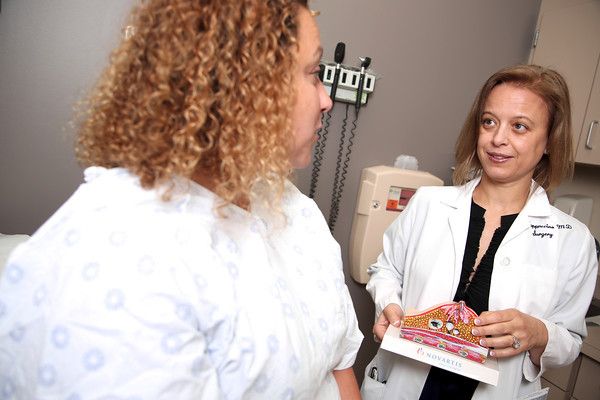Let’s face it: no cancer is a good cancer. But if you do get cancer, being diagnosed at Stage 0 might be considered a best-case scenario.
More women are diagnosed with breast cancer than with any other cancer in this country. This year, an estimated 252,710 women in the United States will be diagnosed with invasive breast cancer, with 63,410 of those women being diagnosed with "in situ" breast cancer, often referred to as Stage 0. According to the American Cancer Society, the 5-year relative survival rate for women with stage 0 breast cancer is close to 100%.
"Ductal carcinoma in situ" (DCIS) is the most common type of non-invasive Stage 0 breast cancer. "Ductal" refers to the location inside the breast milk ducts, and "carcinoma" refers to the type of abnormal cell growth. Cancer “in situ” refers to an early-stage cancer in which the cancerous growth or tumor is still confined to the site from which it started — in this case, inside the ducts and not into the surrounding breast tissue — and has not spread to surrounding tissue or other organs in the body. Therefore, DCIS is often referred to as "non-invasive," because it hasn’t spread beyond the milk ducts into any surrounding breast tissue.
While DCIS isn’t considered life-threatening, it is important to identify and treat it, because having DCIS can increase the likelihood of developing an invasive breast cancer later in life. It is also thought that some DCIS may change or grow into invasive breast cancer. Also, when a sampling biopsy shows DCIS, invasive cancer is sometimes hidden in the unsampled background tissue.
Never miss another Cancer Talk blog!
Sign up to receive our monthly Cancer Talk e-newsletter.
Sign up!While DCIS is more common in women, according to the American Cancer Society, it accounts for about 1 in 10 cases of breast cancer in men. People who have DCIS are considered at greater risk for the cancer coming back or for developing a new breast cancer. According to Breastcancer.org, most recurrences happen within 5 to 10 years after initial diagnosis. The chances of a recurrence are less than 30%.
Who is most at risk for DCIS?
“We consider anyone who has previously had DCIS or other types of breast cancer, older women, and women with certain previous breast histories such as atypical hyperplasia, a precancerous condition that affects cells in the breast, to be most at risk for Stage 0 cancer,” explains Helen Cappuccino, MD, FACS, Assistant Professor of Oncology. “Also at risk are women with radial scars, the benign breast lesions that may be detected as a kind of star-shaped feature that can be detected by mammograms, and intraductal papillomas, benign (non-cancerous) tumors that grow within the milk ducts of the breast. We also look for a family history of breast cancer and prior breast biopsies, as well as women who have a child at age 30 or older, women who have never had a baby, and women who have had fewer full-term pregnancies.”
How is Stage 0 detected?
Although it rarely presents as a mass, DCIS is most often detected with mammograms, and in certain cases, with MRIs. “Keeping up with regular breast self-exams, recommended screenings and mammography, and — if appropriate in limited cases — MRI, is the best self-defense,” says Dr. Cappuccino.
Once detected, surgical removal of the abnormal cells is often recommended, in most cases with a lumpectomy, even though DCIS doesn’t usually form a lump. Following surgery, radiation therapy is often recommended to reduce both the risk of a future invasive cancer and the risk of DCIS recurring. Hormone-blocking pills may also be recommended to help decrease the risk of recurrence.
“The doctors at Roswell Park are meticulous about providing thorough and expert evaluations using state-of-the-art imaging technology, such as digital breast tomosynthesis, also known as 3D mammography, and ultrasound and MRI as needed. Our pathologists, who specialize in breast diseases, provide expert reviews and work with a multidisciplinary team to offer expert analysis of each patient to determine their treatment with the goal of helping them achieve the best possible outcome,” says Dr. Cappuccino.



